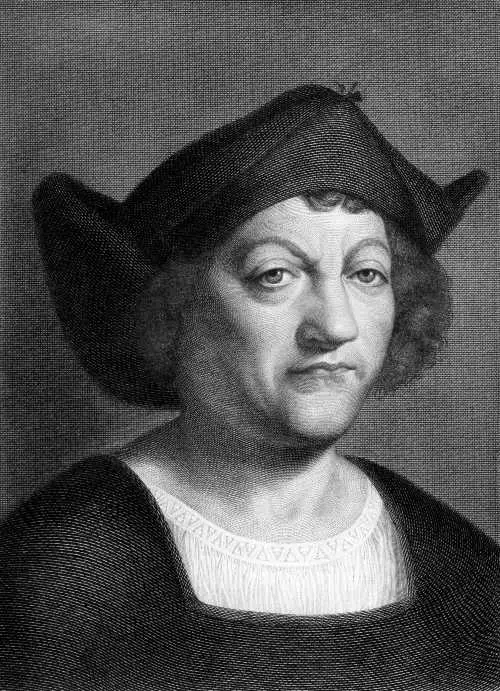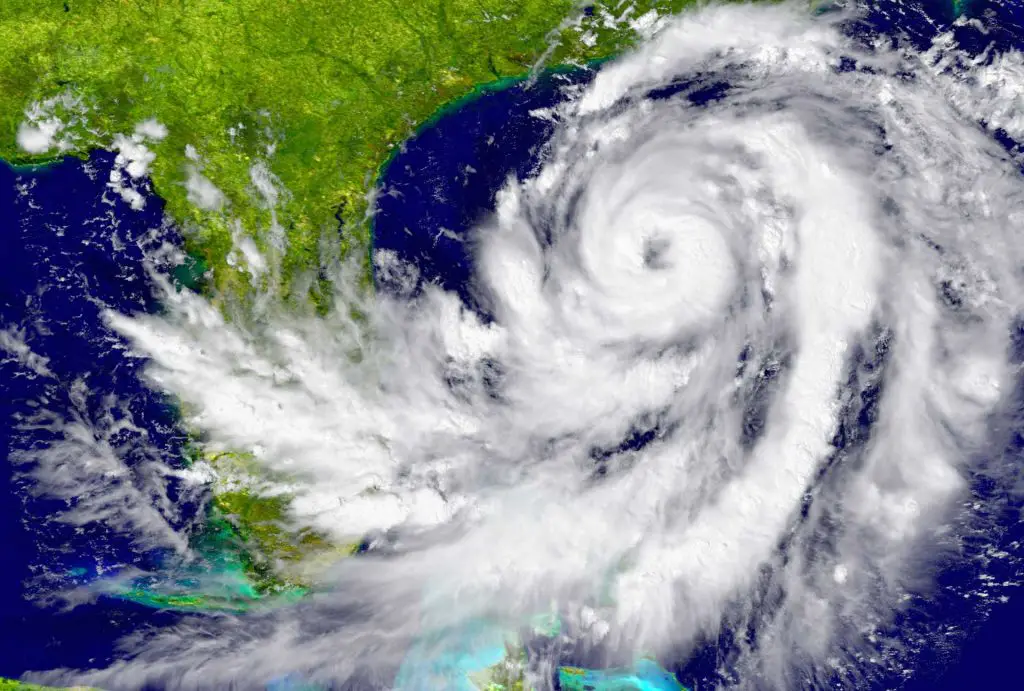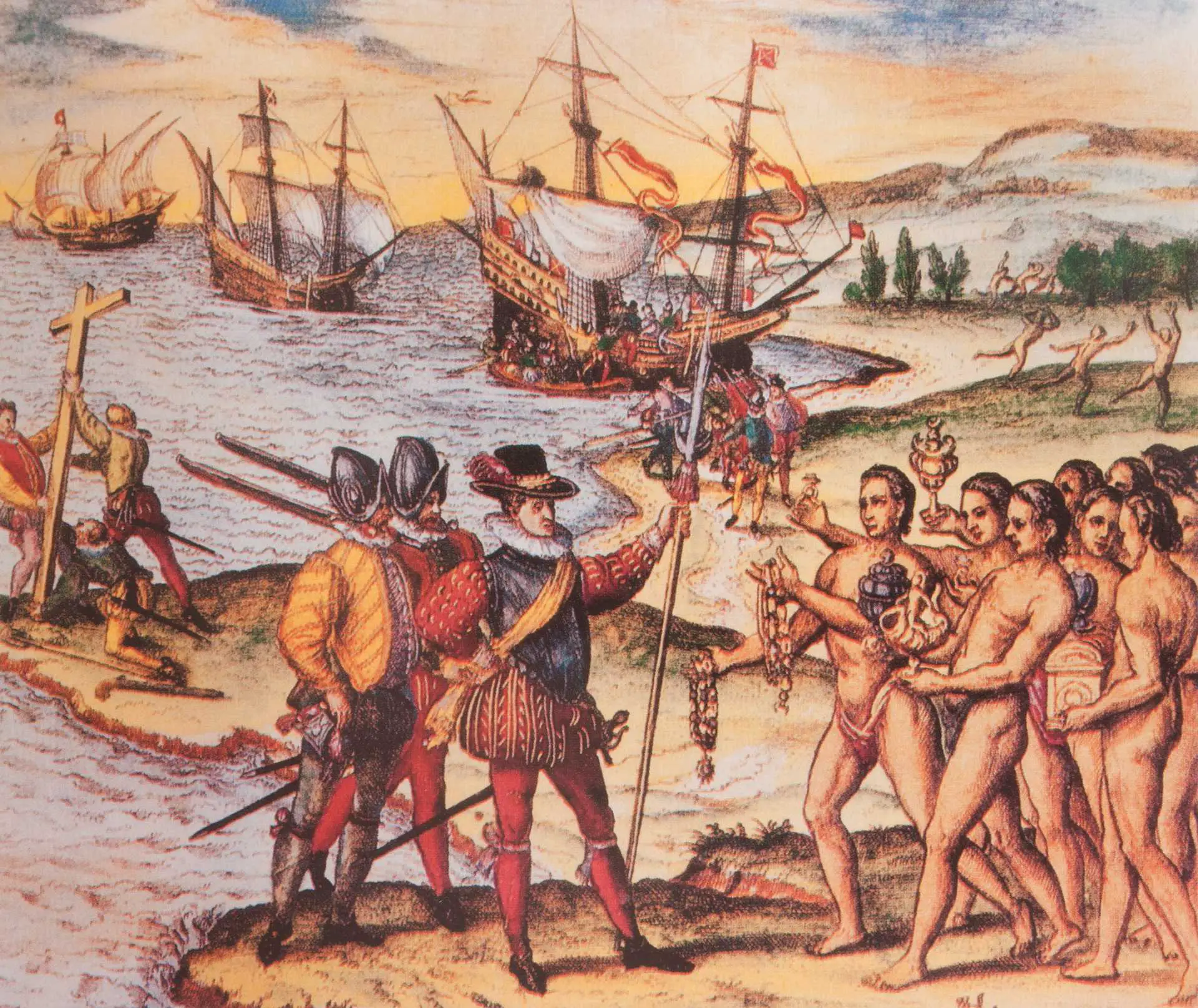About 2 million years ago, Grenada was formed as an underwater volcano. Now, it is a beautiful country in the Caribbean that has endured many tragedies to get where they are now. Tragedies ranging from massacres, natural disasters, wars, rebellion, and much more.
Grenada’s history started out gruesome and eventually flourished into a beautiful country. From its beautiful beaches, culture, unique food, and location, Grenada has become a beautiful country to live and vacation in.
Grenada: In The Beginning
The first known inhabitants of Grenada were the peaceful Arawak-speaking Amerindians from South America. They preferred the art of negotiation over war. The Amerindians of Grenada practiced polygamy, and most men had 2 to 3 wives. Their leader referred to as a cacique often had up to 30 wives.
Amerindian families would typically live in one household, which could get quite big. Normally a man’s home would include all of his wives and children. Many artifacts found on Grenada still to this day were thought to be from the Amerindians.
Around the year 1400, an aggressive tribe called the Carib Indians migrated to Grenada from South America. They traveled by canoe and when arriving in Grenada, killed or enslaved most of the peaceful Amerindians that inhabited the land.

In 1498 during his third voyage regarded as “the new world”, Christopher Columbus sighted Grenada. Grenada was originally called “Concepcion” by Columbus, but it was later renamed to Granada by Spanish sailors. Columbus did not physically step foot on the island. This wasn’t the last name change for this group of islands, the French renamed the island “La Grenade”. Later, the British changed it to Grenada.
While Columbus first sighted Grenada in 1498, European settlers did not settle onto Grenada’s land until 1650. This is because the Caribs aggressively defended the land for this time.
Europeans Settle in Grenada
Since Columbus first sighted Grenada in 1498, many European men tried to land on Grenada for many years after, unsuccessfully. In 1609, a company of British merchants tried and failed to form a settlement. After being on the receiving end of the Carib’s aggressive defenses, the British abandoned their settlement completely.
As well, in 1638 the French launched many attacks but were not successful until 1650 when they made the first initial friendly contact with the Carib inhabitants.
Disagreements between the Caribs and the French broke out almost immediately after their settling, as the French intended to gain control over the whole island. By 1674, the Caribs held out after losing many battles, but eventually, the last surviving Caribs refusing to be captured jumped to their death off a cliff onto rocks below. The French named the cliff “Leapers Hill”.
By 1753, Grenada was a French stronghold, with over 100 sugar mills and over 12,000 enslaved Africans working in the industry. At this point, the Carib people have been completed terminated.
The French and British Fight Over Grenada
Control over Grenada was traded back and forth from the French and British for twenty years. Britain eventually gained control over Grenada from the French in 1763 under the Treaty of Paris. British lost control of the island to the French in 1779 due to a slave rebellion fueled and inspired by the French Revolution. This rebellion took control of almost 90% of the island from the British when around 14,000 of Grenada’s slaves joined the revolution.
Britain received Grenada back through the Treaty of Versailles in 1783. Tensions remained high between the British and their Slaves until the eventual abolition of slavery. French Heritage continues to live on in Grenada through the geographical names and traditions around the island.
Britain introduced a multitude of plantations that harvested cacao, cotton, and nutmeg. Most of these plantations were employed by African slaves, Grenada’s slave population grew to a population of 28,000 slaves before abolishing slavery in 1833.
As well in 1833, Grenada was connected to the British Windward Islands Administration and remained so until 1958. By 1871, Grenada was connected to the telegraph. In 1872, Grenada’s first secondary school was built.
Grenada in the early 1900s
In the early 1900s, the census showed the population of Grenada at 63,439 people. In 1917, the Representative Government Association (RGA) was founded for a new way for Grenadian people to participate in their government. This Association lobbied for constitutional reform in the form of a ‘modified’ Crown Colony government.
This modification allowed Grenadians in 1925 the right to elect 5 out of 15 members of the Legislative Council. The catch was that this only allowed the wealthiest 4% of Grenadian adults to vote. By 1928, Grenada had electricity.
Island Queen Schooner Disappears
On August 5th, 1944 during World War two, a journey had been arranged from Grenada to St. Vincent including two schooners, named The Island Queen and Providence Mark. Among the schooners were several people going to attend a prominent wedding of a Vincentian whose sisters had been married into wealthy families in Grenada.
Most of the younger people boarded the Island Queen, making this boat more of a party scene. While the Providence Mark has a lot of the older passengers aboard, making a calmer and chill environment. The two boats departed almost at the same time, while the Island Queen traveled out farther from the coastline than the Providence Mark.
After nightfall, the last sighting of the Island Queen was from a passenger aboard the Providence Mark around 8-8:30 p.m. After this, they stated that the Island Queen’s lights disappeared, and the boats had separated.
The Providence Mark docked in St. Vincent the next morning, with all passengers off-board by 8 a.m. Many of the passengers were excited that they had beat the Island Queen to St. Vincent since The Providence Mark had an older engine.
After passing through customs, many waited around for their friends and family members who were due to arrive on the Island Queen at any time. The Island Queen never arrived.
No wreckage was ever recovered from the Island Queen, although there were rumors of clothing and shoes washing up on the north coast of Grenada. Many people have conspiracies that the ship was torpedoed by an allied submarine, due to its newer German engine. If not torpedoed, many wonder if the schooner hit an abnormal current, causing the boat to sink completely.
Still to this day, we have no answers on what happened to the Island Queen or its passengers. Many people lost their loved ones that day, and are haunted by the lack of answers they’ve never received about their disappearance.
Grenada Fights Towards Independence

In the 1950’s Grenada added an amendment to their constitution that allowed their elected number of seats on the Legislation Council to go up from 5 to 8. The year 1951 was the beginning of the dismantling of the Crown Colony system in Grenada.
In the 1951 election, the Grenada United Labor Party (GULP), founded by Eric Gairy won the election. They also went on to win the 1954 election. The Grenada National Party (GNP, led by Herbert Blaize) won the election in 1957.
In March 1961, GULP won the election and reinstated Eric Gairy as Chief Minister. In the 1962 election, Herbert Blaize was voted in as Prime Minister for his second time. Soon after, all adults were entitled to vote in general elections.
Grenada joined the Federation of the West Indies in 1958. When that dissolved in 1962, Britain tried to form a small federation out of its remaining dependencies in the Caribbean. This failed, and so Grenada evolved into an associated state with self-government.
Herbert Blaize was the first leader of the Associated State of Grenada from March to August 1967. Eric Gairy served as leader from August 1967 until February 1974. Due to GULP won majorities in the 1967 and 1972 elections.
Hurricane Janet Hits Grenada
Hurricane Janet was a Category 5 hurricane and one of the strongest Atlantic hurricanes on record for 1955. It was also one of the first-named hurricanes to cause over 1,000 deaths. In Grenada, were 500 of those deaths and caused over 7.8 million dollars in damage to Grenada and the surrounding Caribbean islands. It also destroyed over 70% of the nutmeg trees.
While Janet was hovering over the Caribbean islands, an aircraft flew into the storm and was lost. It is believed that all 11 crew members were deceased. No wreckage was ever found of this aircraft either, similar to the Island Queen.
Grenada Gains Independence
Grenada gained its independence on February 7th, 1974. They continued to practice a modified version of the Westminster parliamentary system based on the British model. Grenada became a constitutional monarchy, with Gairy as Prime Minister and Queen Elizabeth the 2nd as head of state.
Gairy won the election again in 1976, however, his new opponents the New Jewel Movement refused to acknowledge these results. In March of 1979, while Gairy was visiting the USA, a man named Maurice Bishop seized power. He rallied a revolution against Gairy and the GULP, called the New Jewel Movement and the People’s Revolutionary Government (PRA). Bishop’s new government was a socialist/communist government with close ties to the Soviet Union and Cuba.
During this time, Bishop banned all other governments and held no elections during his four-year rule. The New Jewel Government built state farms and industries, and with Cuba’s assistance began construction of the modern international airport at Point Salines.
In October 1983, a power struggle within the government landed Bishop on house arrest and later executed along with 7 of his other executives. A man named Bernard Coard (Bishops Deputy Prime Minister) led this first seizing and is who is responsible for ordering the executions of Bishop and his aides.
After this, many coups and revolutions started with many different people going in and out of power in Grenada. Grenada was complete chaos with no official government in rule, just many people trying to develop their dictatorships.
At one point, there was a four-day long curfew under which any civilian outside of their home during these days was immediately executed in the street. This created mass chaos in the country during the Cold War and the U.S. did not like seeing this push of communism in Grenada.
The United States Invades Grenada
The United States felt concerned for the safety of American medical students studying in Grenada during these revolutions. As well, they did not like the idea of the regional impact of another communist country.
This was during the Cold war when the U.S and Russia were essentially fighting over if the world should be run on Democracy or Communism. In 1983, the US decided to invade Grenada in a mission called Operation Urgent Fury and successfully removed the PRA from power that same year. During the invasion, 45 Grenadians, 26 Cubans, and 19 Americans were killed.
Seventeen members of the PRG and the PRA were tried and convicted by a court. These people became known as the Grenada 17. Fifteen of these were sentenced to death and later changed to life in prison for the overthrowing of the government and murder of several people including Bishop. As well, the United States gave almost 50 million in economic assistance to Grenada in 1984.
After invading Grenada, the United States left in 1983 and set in place a Democracy government.
Grenada’s Democracy
In 1984, the finally finished Point Salines International Airport opened, which helped Grenada receive commercial jets for the first time in the country.
The first democratic elections in Grenada were held in 1984, Herbert Blaize of the Grenada New National Party (NNP) won 14 out of 15 seats in elections and served as Prime Minister until his death in 1989.
Five GNP party members left the party in 1986 and formed the National Democratic Congress (NDC) which became the GNP’s official opposition. After Prime Minister Haize died in 1989, he was succeeded by Prime Minister Ben Jones until after the 1990 elections.
The DNC won the 1990 elections, as the strongest party. Nicholas Brathwaite became prime minister for two terms and resigned in February of 1995. Succeeding him, was prime minister George Brizan who served until the June 1955 election.
In the 1995 elections, the NNP party took stronghold for many years, making Keith Mitchell prime minister until his defeat in 2008. By 2001, the Grenada census showed its population at 100, 896.
Grenada in The Early 2000s
Between 2000-2002 much of the chaos from the late 1970s to the early 1980s was brought to the public’s attention by the Truth and Reconciliation Commission. The commission was founded by a catholic priest, Father Mark Haynes.
The Truth and Reconciliation Commission was tasked with uncovering the injustices arising from PRA, Bishop’s Regime, and everything before. It held many hearings in Grenada. It was discovered that there was still a lot of hate in Grenadian society from the era. Many citizens felt that some of the horrible things that happened during that time had still not been addressed.
Hurricane Ivan Hits Grenada
In 2004, one of the most powerful hurricanes to hit the Caribbean wreaked havoc on Grenada. Hurricane Ivan is believed to have killed 15 people in the Caribbean Islands. 90% of the homes in Grenada were damaged and an unknown number of convicts escaped when a prison on the island was destroyed.

Some of these escapees included some of the Grenada 17, known for being jailed for life for the killings carried out in 1983. It is unknown if the convicts were ever found and re-imprisoned. Many believe they fled the country after or hid in plain sight by changing their appearance and identity.
Many did not feel safe due to the looting afterward. Police had difficulty getting the looting under control, due to all the police stations being damaged by the hurricane. Most of Grenada’s aquaculture had been destroyed as well.
The country hoped that growth in student enrollment in schools would help bring more people to Grenada. As well, to battle the damages the country began employing locally-based contractors rather than off-island contractors to promote local employment after the disaster. All five of the island’s health facilities were restored to pre-hurricane conditions. As well, 18 of 19 schools were rehabilitated or reconstructed.
After Hurricane Ivan, Grenada was hit by a severe tropical storm a month later. In 2005, Grenada was hit by a category 5 hurricane, Emily. Worsening the damages and completely plummeting their economy. The country has had a hard time with creating a stable economy ever since.
This article takes a deep dive into the impact Hurricane Ivan had on Grenada: Do Hurricanes Hit Grenada?
Grenada in the 2010s
In 2010, Grenada was struggling with a serious rise in domestic violence and sexual violence issues. Many felt that it had gotten out of control and no punishments were being given
The Grenadian House of Representatives approved the Domestic Violence Act of 2010. This act was implemented in 2011 along with the Domestic Violence and Sexual Assault protocol. According to the Grenadian government, these acts possess strong tools for law enforcement officials, increase penalties for both first times and repeat offenders, greater protection for victims, and the ability to grant protection orders.
In 2014, Grenada celebrated 40 years of peace and democracy.
Grenada’s Current Prime Minister
Grenada’s current prime minister is Keith Mitchell. He has been serving this role since 2013, not counting the time he served as Prime Minister from 1995 to 2008. He is currently the longest-serving Prime Minister in Grenada’s entire history. He is a member of the New National Party (NNP). Mitchell was born in 1946 and raised in the community of Brizan, Saint George’s of Grenada. Before becoming a Politian, he was also a cricketer captain for Grenada in 1973.
Mitchell graduated from the University of the West Indies with a Bachelor of Science degree in mathematics and chemistry in 1971. He later went on to gain his master’s and doctorate degrees from Howard University and American University.
He began his political career by being elected to a seat in the House of Representatives from St. George North constituency. He was elected as leader of the NNP in 1989, defeating Herbert Blaize. Mitchell first took office during the 1995 election. He went on to win 2 more terms until his party was defeated by the National Democratic Congress (NDC) in 2008. He was re-elected as Prime Minister in the 2013 election.

